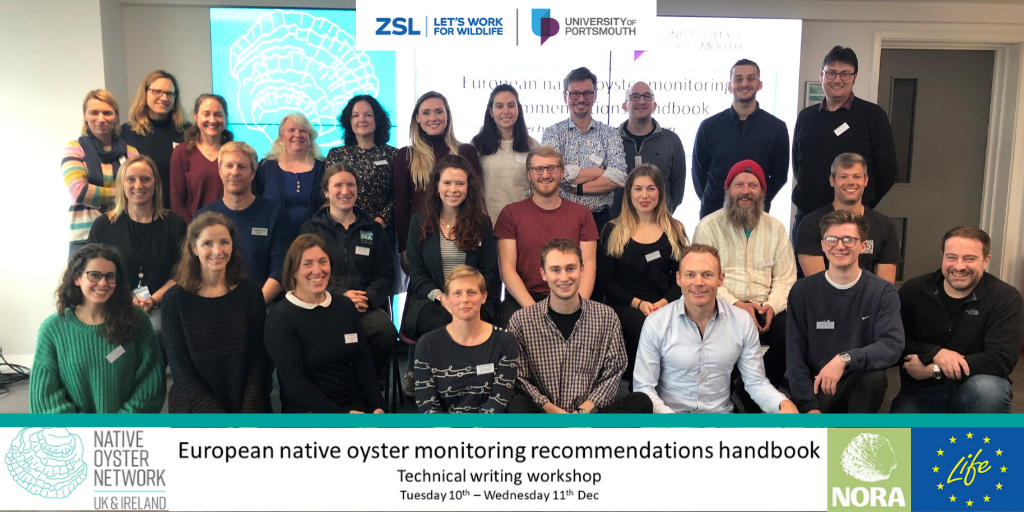
Native Oyster experts agree on monitoring methods for oyster habitat restoration
-
Aquaculture, fisheries and coastal agriculture
-
Coastal wetland conservation
-
Species
With an estimated decline of 95% since the 19th century, native oyster reefs are now one of the most threatened marine habitats in Europe. In some regions, native oysters are now considered extinct. The key driver behind this huge decline is historic overfishing, however, habitat loss, disease, pollution and invasive non-native species are all contributors. Wetlands International supported a workshop hosted by the Native Oyster Network aimed to achieve agreement on monitoring methods for oyster habitat restoration projects. The results of the workshop underpin the European Native Oyster Monitoring Handbook.
European Flat Oyster decline
Native oysters provide us with vital ecosystem services. As filter feeders, European flat oysters (Ostrea edulis) are capable of filtering large volumes of water daily, a single oyster can filter almost 200 litres of seawater daily. Oysters vastly improve water quality and are capable of preventing algal blooms. Left undisturbed, oysters will form reefs, these complex structures are formed when large numbers of living oysters and dead shells form an extensive biogenic habitat on the sea floor. These reefs provide habitat and refuge for a diversity of organisms, such as juvenile fish, crabs, sea snails and sponges. Under the EU Habitats Directive these are covered by the Annex I habitat type ‘Reefs’.
Oyster restoration efforts
Oyster restoration is growing in momentum across the globe, and efforts to restore oyster reefs in the US and Australia have already begun to report success. A European Network, named the Native Oyster Restoration Alliance (NORA) was established during a workshop held in Berlin in November 2017. During this initial workshop, NORA produced the Berlin Oyster Recommendation on the Future of Native Oyster Restoration in Europe. NORA aims for the reinforcement and restoration of the European native oyster across Europe. In the UK, the Native Oyster Network (UK & Ireland) was also created in 2017 in partnership with the Zoological Society of London (ZSL) and the University of Portsmouth. Its aim is to facilitate ecologically coherent restoration of Native Oysters across the UK & Ireland by bringing together scientists, fishers, conservationists and government. The Network is also working to promote best practise of native oyster conservation and to increase the cultural and environmental value of native oysters.
European Native Oyster Monitoring Handbook
On 10th-11th December 2019, the Native Oyster Network in collaboration with the European Native Oyster Alliance hosted a technical writing workshop at the Future Technology Centre at the University of Portsmouth. The workshop was supported by the Wetlands International – European Association, ZSL, John Ellerman Foundation and the University of Portsmouth.
The workshop brought together 30 participants from England, Wales, Scotland, Ireland, Germany, Netherlands and Australia. Participants decided on appropriate oyster habitat monitoring methods required to record the progress of restoration projects and guide the recovery process. Some initial results of the workshop include methods as to how to measure the interactions of biodiversity associated to restored oyster reefs, methods to monitor socio-economic benefits of restoration projects and how to measure the carbon storage of oyster reefs. The content produced will underpin European Native Oyster Monitoring Handbook, with the purpose of outlining monitoring recommendations and assessment methods for Ostrea edulis restoration projects.
The handbook will be produced in Spring 2020. Updates will be published on nativeoysternetwork.org/.
This workshop received financial support from the European Union. The contents are the sole responsibility of the organizers and can in no way be taken to reflect the views of the European Commission.
Header image © ZSL

